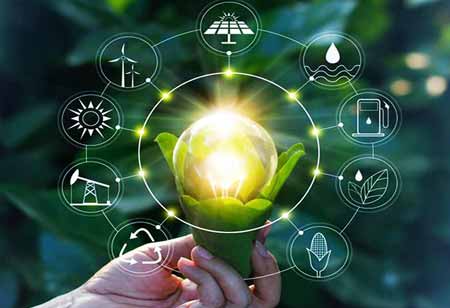Thank you for Subscribing to Energy Business Review Weekly Brief
Trends in Battery and Cell Technology that will Influence the EV Industry
In significant economies, zero-emissions legislation drives strong EV sales, resulting in a global energy storage demand of over 3 TWh by 2030.

By
Energy Business Review | Tuesday, January 03, 2023
Stay ahead of the industry with exclusive feature stories on the top companies, expert insights and the latest news delivered straight to your inbox. Subscribe today.
Battery innovations and improvements will drive technological advancements and help reduce costs and make batteries more affordable.
FREMONT, CA: In significant economies, zero-emissions legislation drives strong EV sales, resulting in a global energy storage demand of over 3 TWh by 2030.
Given the importance of rechargeable batteries to reaching the objective of a climate-neutral society, reducing battery costs through technological interventions is currently a significant priority for the widespread adoption of EVs.
Li-ion batteries with NMC or LFP cathodes and graphite anodes are the most used today.
In recent years, EV manufacturers have transitioned to High-Ni NMC for medium- to premium-class BEVs with greater energy density and LFP (Lithium Ferro-Phosphate) in entry-level models to retain price parity with ICEs.
Moreover, there are many important trends in battery and cell technology for the future generation that EV manufacturers must be aware of to ensure the broad acceptance of electric vehicles:
LFP is gaining ground on NMC batteries
With its lower fire risk, lower cost, and longer cycle life, LFP is gaining ground over NMC in automobiles and energy storage systems. Tesla sold half of its first quarter 2022 vehicles with LFP, while LG, ES, and SK have confirmed adding it to their portfolios.
In addition, innovations such as Cell-to-Pack (CTP), structural battery packs, and big format cells greatly counter the limitations of LFP's energy density, such that range is no longer a relevant concern.
New Cell Chemistry Will Reduce Battery Pack Prices
Battery pack prices must fall below $100 per kilowatt-hour to achieve parity with internal combustion engines without subsidies (compared to $129 in 2021).
Rising battery material costs, Covid-curbs, the Russia-Ukraine conflict, and cobalt mining issues have spurred numerous OEMs and suppliers to study alternative chemistries and other technological interventions during the past year.
Manufacturers are evaluating manganese-rich and Cobalt-free cathodes like LMFP, NMX, and LNMO to lower the cost of batteries. These possibilities are currently being developed by CATL, Samsung, Panasonic, SVOLT, and others, with commercialization anticipated to commence in 2023.
Similar research is being performed to enhance the capacity of batteries using anodes, silicon-graphite composites, and pure silicon anodes to solve energy density, fast-charging, and graphite supply chain limitations.
Numerous firms, including Sila Technologies, Enevate, Storedot, Group 14, and others, are exploring high silicon anode designs and have garnered strategic funding from OEMs.
Another anode chemistry, LTO batteries, have a specialized use case with extended life and lower TCO, especially for commercial vehicles (CVs) and stationary energy storage systems (ESSs). LTO improvements aid the CV industry in boosting EV adoption and mitigating charging downtime's effect on operations.
Niobium-based anodes are gaining favor for replacing conventional LTO chemistry in fast-charging applications and reducing system costs due to their greater capacity.
The Advancement Of Solid-State Batteries (SSBs)
Solid-state State Batteries (SSBs) are attracting significant attention from academics and businesses due to their low flammability, faster charging, and higher energy density. By the next decade, the leading players will concentrate on commercialization on a broad scale.
The leading startups Prologium, Solid Power, and QuantumScape have secured strategic financing from cell suppliers and original equipment manufacturers.
Since SSBs have a low penetration rate, they are projected to acquire traction in the EU and the US for applications needing high energy density and longer range, especially in premium and commercial cars, at a premium price, mainly before the end of the decade.
However, substantial modifications are necessary to scale up electrodes and separators for SSBs. Other advanced lithium-based technologies, such as lithium-sulfur and lithium-air batteries, are currently being researched and are at an early stage of development.






